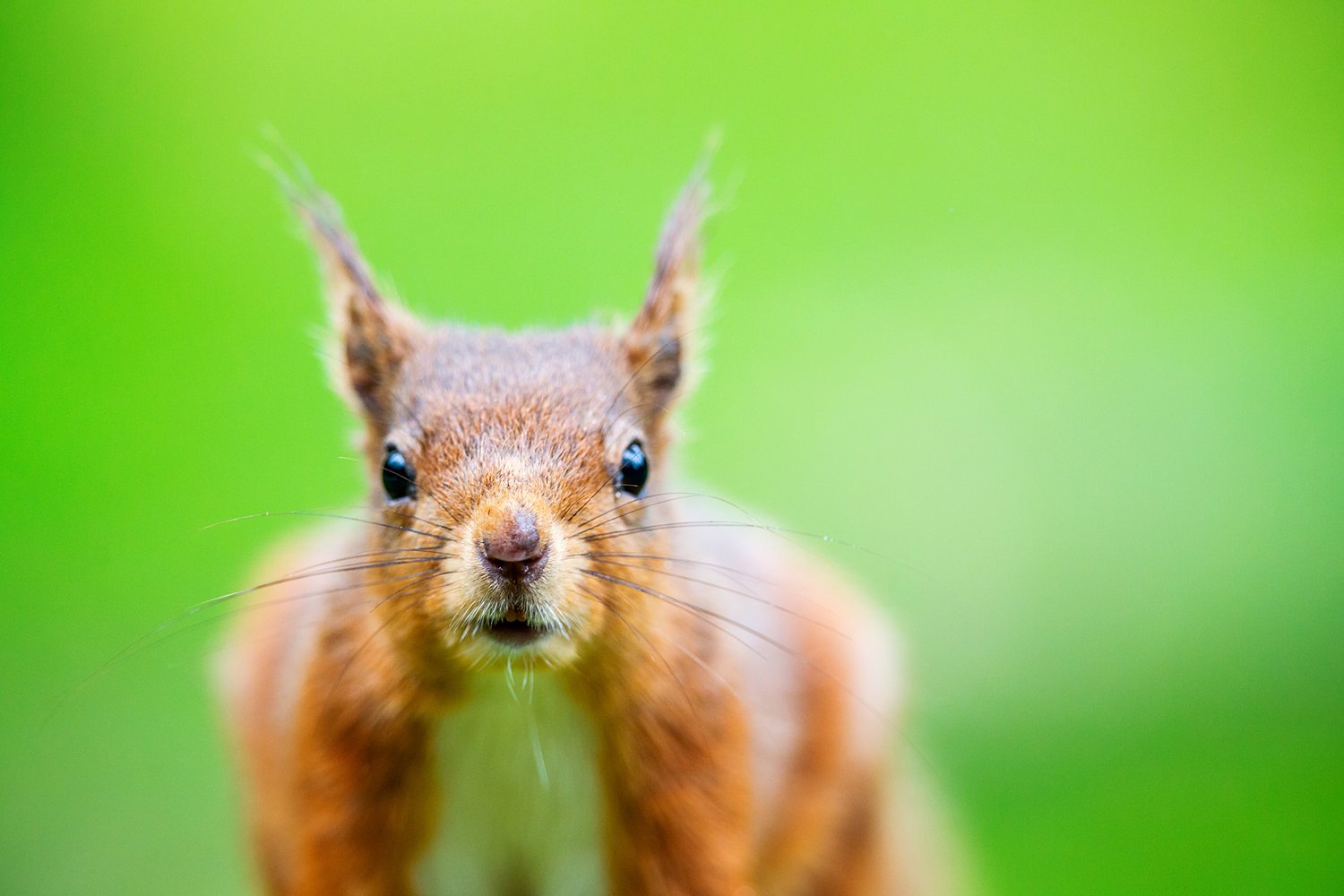
RED SQUIRREL
Sciurus vulgaris
Native to the UK, this attractive arboreal mammal has a chestnut upper body, with buff to cream underside, noticeable ear tufts and the famous fluffy tail. The red squirrel moults its coat twice a year but the ear tufts and the tail are only moulted annually. Living around 6 years, these diurnal creatures spend most of their active day foraging, bad weather can seriously hinder this activity and, without food, the squirrels can only survive for a few days.
Go Nuts…
Red squirrels do not hibernate and lay down stores of food to see them through periods when fresh food is not available. Where they are found in mixed broadleaf and coniferous woodland they have a source of food all year round, as pine seeds are present over the winter months. However, red squirrels have quite a varied diet which includes seeds, buds, flowers, leaves and fruit. They are known to take insects, fungi and birds' eggs.
Having Kittens….
Red squirrels build nests, called dreys, from sticks and moss placed high in the branches. They produce two litters of three to four kittens a year, usually in March and July. A drey is often the first sign to show the presence of red squirrels in a wood. Other signs are chewed pine cone 'cores' (birds leave ragged remains), split hazel nut shells (dormice make a hole to extract the kernel), cut tree shoots and scattered droppings.
Distribution and Habitat
The red squirrel, with a preference of woodland that contains a fair proportion of conifer trees, populations thrive across most of Europe into northern Asia and Siberia, in these areas the population is not threatened. However, in the UK, it is restricted to only a few sites, mainly those free from competition by grey squirrels. In Europe, they are found in large forests, gardens and parks and at altitudes of up to 2,000 metres. In the UK they are now chiefly confined to coniferous forests but can live in mixed woodland that has yet to be invaded by greys.
Red vs Grey
Many of you may think the Grey Squirrel is native to the UK, however, this is not the case; in 1876, Grey squirrels which are native to North America were introduced into our country with little knowledge of the potential damage to our ecosystems. There is evidence to suggest that red squirrels have fluctuated in numbers in the UK since the last ice age. In the last 50 years, however, their dramatic decline has been due to loss and fragmentation of habitat, disease and in particular, competition from the introduced Grey Squirrel. The two species are known to coexist in some locations but while there is no evidence of aggressive behaviour by greys, competition for limited food sources tends to favour the introduced animal. The Red Squirrels are also vulnerable to Squirrel Pox which is carried by the Grey Squirrels. Squirrel Pox is often fatal to the Reds, but their Grey counterparts have built up an immunity to the disease.



